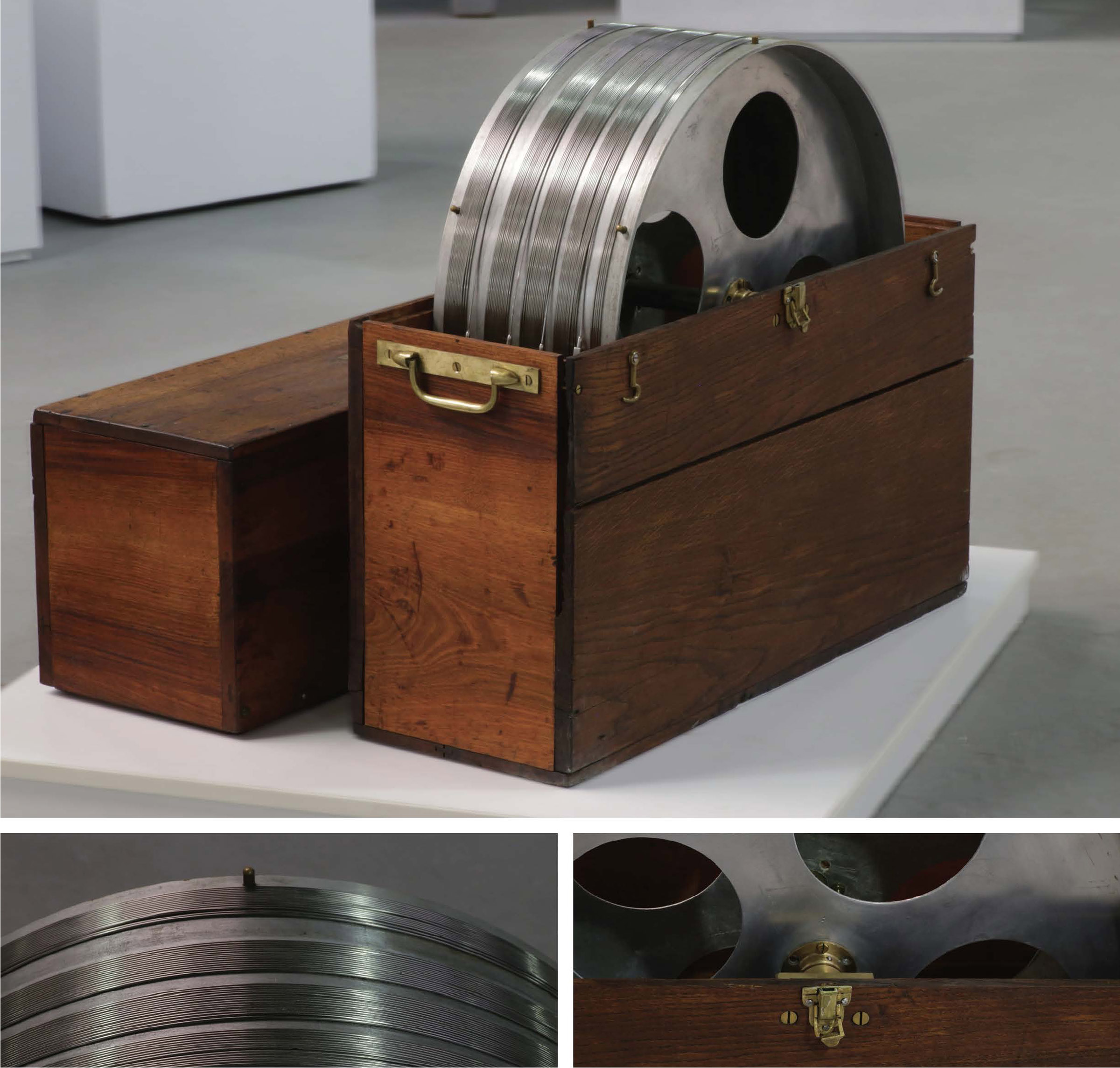One Millimetre per One Kilometre
Set of invar wires for geodesic measuring
Manufacturer: Carpentier
Place and time of production: Paris, France, 1904
Dimensions (cm): 71 . 25 . 67
Inventory number: Т: 6.95
Precise measurements of great distances in geodesy have always been a serious challenge. Jäderin’s device from 1880, with a 24 m long wire that spanned over two tripods using weights, represented a huge improvement in the procedure. Its weakness was the still unresolved issue of the change in the length of the wire due to temperature changes. That problem was overcome in 1896 by René Benoît and Charles Édouard Guillaume, who invented invar, alloy of nickel and iron with an extremely low coefficient of thermal expansion. That is how geodesic equipment Jäderin- Guillaume was created, which was developed and manufactured by Jules Carpentier's company in Paris. The accuracy achieved with invar wire measurements was 1 : 1.000.000, while the error was 1 mm per 1 km.
Geodesic measurement in the Balkans were started by the Austrian Military Geographic Institute in 1872. In the Kingdom of Serbia, the first measurements were performed in 1887 by Milan Andonović, member of the newly founded Institute of Geodesy of the Great School. Surveys were continued by the Geographic Department of the General Staff (later Military Geographical Institute) in 1889 and the Cadastre's Board in 1928. The obtained coordinates came into official use in 1928.
General Stevan Bošković, later Head of the Military Geographical Institute, sent to Russia and France to get acquainted with the latest geodesic technologies, was present at the testing of the invar wire system in Paris. Realising the importance of the new system and using his personal connections, he obtained a set of invar wires and brought them to Serbia in 1904. That is how Serbia became one of the first countries that had this advanced measurement system. The set of invar wires became part of the Museum fund in 2003, as a donation by the Department of Geodesy of the Faculty of Civil Engineering in Belgrade.



